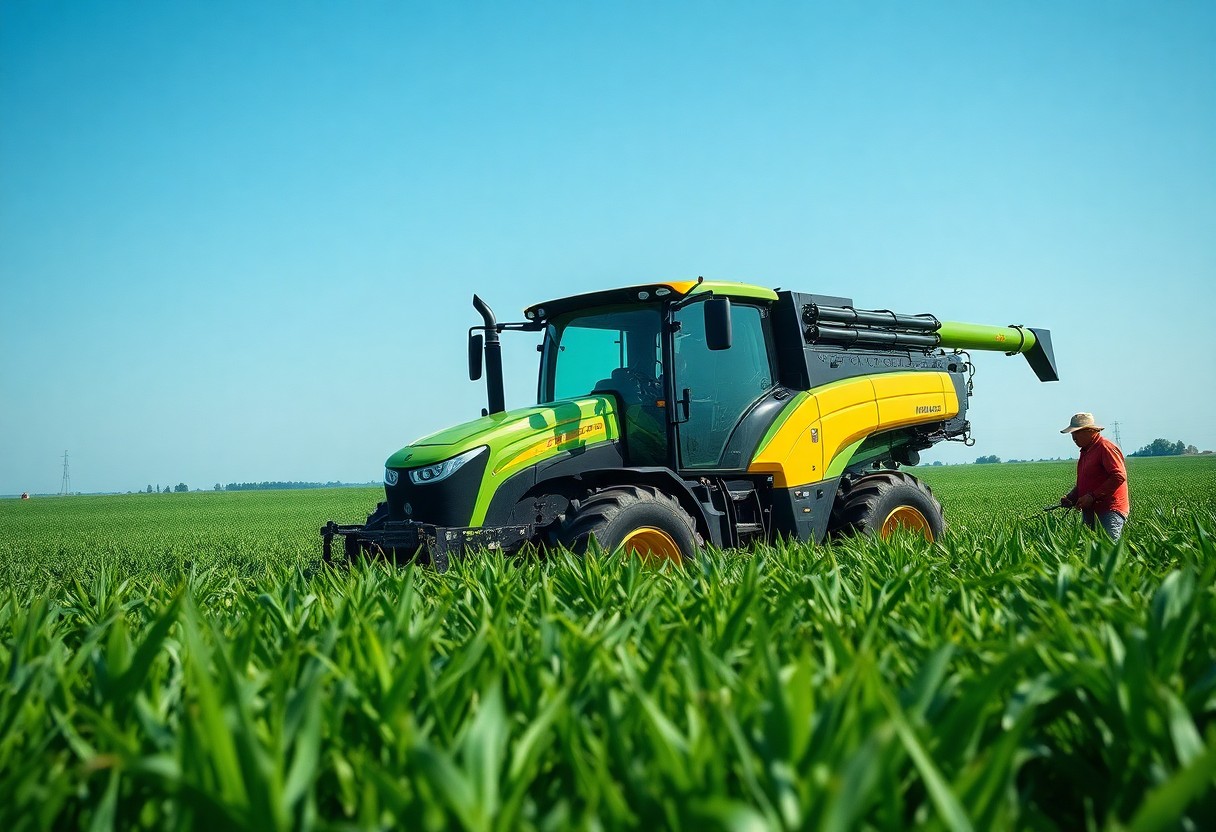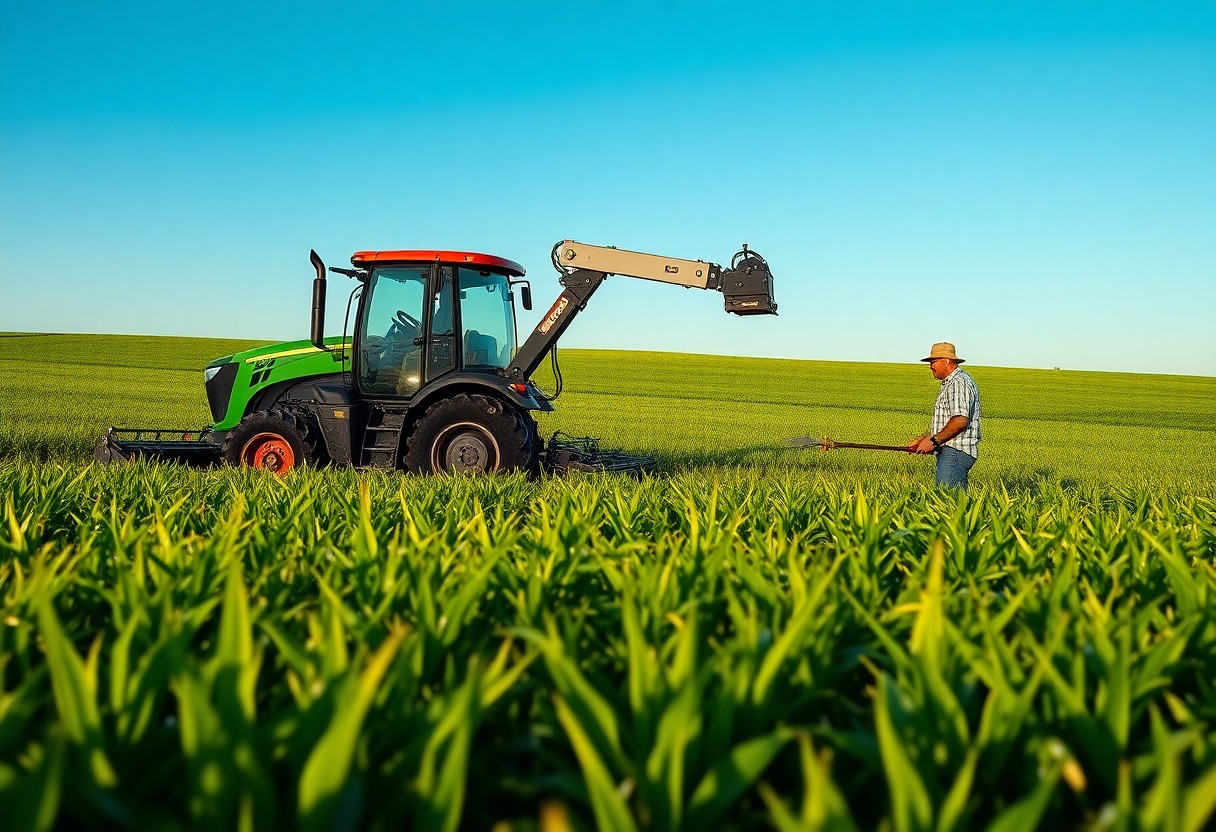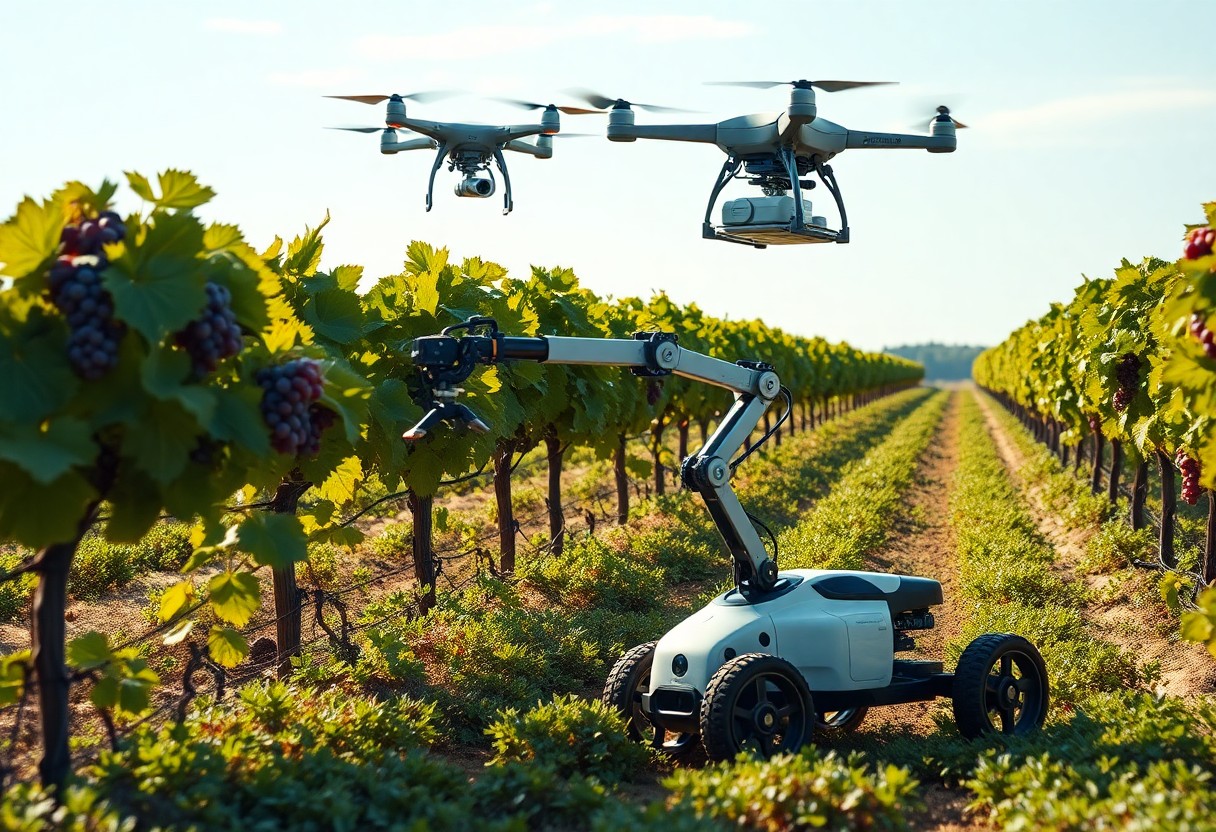With advancements in technology, you are witnessing a revolution in agriculture where robots are fundamentally changing the way farming operates. These innovative machines are enhancing productivity, optimizing resource use, and minimizing labor costs across various agricultural practices. From planting and harvesting to monitoring crop health, robots are becoming invaluable tools in the field. Understanding how these technologies work can help you appreciate their impact and explore the potential benefits they bring to your own farming practices.
The Rise of Precision Agriculture
Precision agriculture is redefining the farming landscape by leveraging technology to increase efficiency and productivity. By employing data-driven approaches, farmers can optimize inputs, reduce waste, and enhance crop yields. With innovations like variable rate planting and smart irrigation systems, you can tailor your farming practices to the specific needs of your fields, resulting in both economic and environmental benefits. This shift towards precision not only maximizes your land’s potential but also promotes sustainability in agriculture.
How Drones Are Shaping Crop Monitoring
Drones have revolutionized crop monitoring by providing real-time aerial imagery and data analysis. You can use high-resolution images to assess plant health, detect pests, and evaluate irrigation needs. These insights empower you to make timely decisions, ensuring your crops receive the attention they need. With the ability to cover large areas quickly, drones enhance your efficiency and provide a new lens through which to view the overall health of your farm.
The Role of Sensors in Soil and Crop Health
Sensors play a pivotal role in monitoring soil conditions and crop health on a granular level. By deploying soil moisture and nutrient sensors, you can gather critical data that informs your irrigation and fertilization practices. This real-time feedback allows for better resource management, ensuring your crops have the ideal conditions for growth.
Advanced sensor technology, such as soil moisture probes and nutrient monitoring systems, delivers detailed insights into factors affecting crop health. For instance, soil moisture sensors can help you ensure water is applied only when needed, minimizing waste and optimizing irrigation schedules. Simultaneously, nutrient sensors allow you to monitor crucial elements like nitrogen and phosphorus levels, ensuring your crops receive adequate fertilization without overapplying chemicals. By integrating these sensors into your farming practices, you can enhance yield while promoting sustainable soil management, ultimately leading to healthier crops and a more productive farm.
Autonomous Machinery: The Future of Farming
The shift towards autonomous machinery represents a hallmark of innovation in modern agriculture. Through the use of advanced technology, autonomous tractors and drones can optimize tasks such as planting, watering, and harvesting, allowing you to enhance productivity while minimizing human error. As these machines integrate machine learning and AI capabilities, you gain unparalleled precision and efficiency, fundamentally changing the landscape of farming operations.
Tractors and Harvesters: Efficiency Redefined
Your traditional farming practices are being transformed by high-tech tractors and harvesters designed for maximum efficiency. Equipped with GPS and sensor technology, these machines can autonomously navigate fields, manage crop inputs, and improve fuel consumption by up to 30%. The result? Not only does your operation become more cost-effective, but it also significantly reduces the time needed to complete crucial tasks, ultimately leading to higher yields and profits.
The Impact of Robotics on Labor Dynamics in Agriculture
The integration of robotics is reshaping the labor requirements in agriculture. As harvesting robots and automated machinery take on more tasks, the demand for manual labor in your fields is decreasing. Some estimates suggest that up to 40% of agricultural jobs may evolve or become obsolete in response to these technological advances, prompting a need for workers to adapt and upskill to remain relevant in an industry that increasingly values tech-savvy approaches.
The impact on labor dynamics is both profound and multifaceted. While agricultural automation might displace some traditional roles, it also opens doors for skill development and higher-quality jobs that focus on technology management, data analysis, and machine maintenance. As you navigate this transformative landscape, investing in training programs for existing employees becomes vital. Fostering a workforce capable of operating and repairing these sophisticated machines will not only bolster job security but also ensure that your agricultural operation thrives amid the rise of robotics.
Food Production and Sustainability: A New Frontier
Innovation in agricultural technology opens a pathway for sustainable food production, where robotics play a pivotal role. By utilizing advanced systems, you can address resource scarcity, improve crop yields, and minimize environmental impact. This new frontier allows for a comprehensive approach to sustainability, ensuring that your farming practices not only meet today’s needs but also preserve the ecosystem for future generations.
Reducing Waste with Smart Robotics
Smart robotics significantly reduce waste in food production by optimizing resources and minimizing loss. Automation systems analyze data to fine-tune planting, harvesting, and processing practices. With tools like intelligent sorting machines, you’re able to separate quality produce from waste efficiently, decreasing edible food loss and maximizing profits.
Enhancing Biodiversity Through Automated Practices
Automated systems can greatly enhance biodiversity on your farm by supporting diverse cropping systems and promoting nutrient cycling. Robotics integrates seamlessly into crop rotations and intercropping strategies, allowing for a healthier ecosystem. These farming techniques contribute to the resilience of crops against pests and diseases while enriching the soil with varied organic matter.
Through automated practices like precision seeding and targeted pest management, you encourage biodiversity by creating habitats for beneficial insects and microorganisms. Drones and sensors analyze field conditions, allowing for timely interventions that foster a diverse range of crops. Studies have demonstrated that farms employing these methods see increased yields and reduced chemical inputs, showcasing how technology and biodiversity can coexist harmoniously in your agricultural practices.
Integrating AI: A Radical Shift in Decision Making
Adopting AI in agriculture represents a transformative change in how you approach decision-making processes on your farm. By leveraging machine learning algorithms and real-time data analysis, you can make informed choices with heightened precision. This shift enables you to predict outcomes based on various inputs, thereby allowing you to optimize resource allocation, crop selection, and pest management strategies efficiently. The result is not just improved productivity but also a significant reduction in the trial-and-error approach traditionally associated with farming.
Data-Driven Farming: Improving Yield and Reducing Costs
The integration of data analytics into farming practices leads to enhanced yields and cost reductions. By utilizing sensors and IoT devices, you can gather crucial information about soil health, moisture levels, and crop conditions, allowing you to tailor your interventions accurately. This data-driven strategy minimizes waste, conserves resources, and ultimately results in a more sustainable farming operation that increases profitability over time.
Predictive Analytics in Crop Management
Predictive analytics empowers you to anticipate challenges and opportunities in crop management. By analyzing historical data and current conditions, you can forecast potential issues such as pest outbreaks or weather impacts. This level of foresight allows for timely intervention, meaning you can adjust planting schedules or apply targeted treatments to mitigate risks effectively.
Leverage predictive analytics by utilizing tools that analyze patterns in historical yield data, weather forecasts, and pest prevalence. For instance, a recent study demonstrated that farmers using predictive models increased their corn yields by up to 15% while reducing fertilizer usage by 20%. By harnessing these insights, you not only ensure healthier crops but also optimize resource expenditure, fostering both environmental sustainability and increased farm profitability. The trend towards using predictive analytics signifies a shift towards smarter farming—one where data-driven decisions lead to enhanced productivity and fewer surprises in your agricultural operations.

Challenges in Robotic Adoption: Balancing Innovation and Tradition
As the agricultural landscape evolves through robotics, challenges persist in marrying modern innovation with traditional practices. These hurdles require a careful assessment of economic implications, particularly for small-scale farmers who often grapple with the costs of integration. You may find that existing systems and knowledge also create an inertia that slows down the imperative transition to robotic tools, challenging the status quo.
Economic Barriers for Small Farmers
The high initial investment for robotic technology can be a significant barrier for small farmers. Purchasing machinery like drones or automated tractors may seem out of reach, especially when margins are already tight. Many small-scale operations lack access to financing options that could make such upgrades feasible, leaving them at a competitive disadvantage against larger farms that can afford these innovations.
Societal Resistance to Technological Change
Resistance to change often manifests in skepticism about the reliability and effectiveness of robotic solutions in agriculture. You may encounter negative perceptions surrounding technology that overtakes human labor, leading to fears of job losses. Many agricultural communities value tradition and the knowledge passed down through generations, making adaptations difficult in environments that prioritize cultural practices over innovation.
This societal resistance isn’t unfounded; the agricultural sector has deep-rooted traditions that inform how farming is conducted. When you introduce new technologies, it can cause anxiety over the loss of established ways of life. For instance, a community heavily reliant on manual labor may view robots with distrust, worrying that mechanization could alienate them from the soil they’ve cultivated for years. Open dialogue and educational initiatives can help bridge this gap; when farmers understand the augmentation potential of robotics rather than view it as a replacement, they may be more inclined to embrace these technologies as beneficial partners in their farming practices.
The Future Landscape: What’s Next for Agricultural Robotics
Emerging Technologies
Exciting advancements like drone technology and advanced sensors are on the horizon, promising to revolutionize how you manage your farm. Drones equipped with multispectral cameras can assess plant health by capturing images that reveal stress or nutrient deficiencies, enabling precise interventions. Meanwhile, IoT devices will enable real-time data collection, allowing predictive analytics to enhance your crop management strategies significantly.
Collaboration and Adaptability
Partnerships between tech developers and farming communities will foster innovation that suits your specific needs. As robots become more customizable, you can tailor their functionalities to optimize your operations, from planting to harvesting. The adaptability of these machines means they’ll evolve alongside your farming methods, learning from your techniques and continuously improving efficiency in ways traditional methods cannot.
Sustainability and Environmental Impact
Looking ahead, agricultural robots will play a key role in promoting sustainability. With precision farming techniques, you can significantly reduce pesticide and fertilizer use, leading to better soil health and reduced chemical runoff. Innovations like robotic pollinators and weeding systems will enhance biodiversity while minimizing environmental impact, addressing both economic needs and ecological responsibilities.
To wrap up
On the whole, you can see how robots are revolutionizing agriculture by enhancing productivity, precision, and sustainability. By integrating advanced technologies such as automated machinery and drones, you can optimize your farming practices and better manage resources. As these innovations continue to evolve, you have the opportunity to improve your crop yields and reduce labor costs, making your agricultural operations more efficient and environmentally friendly.







